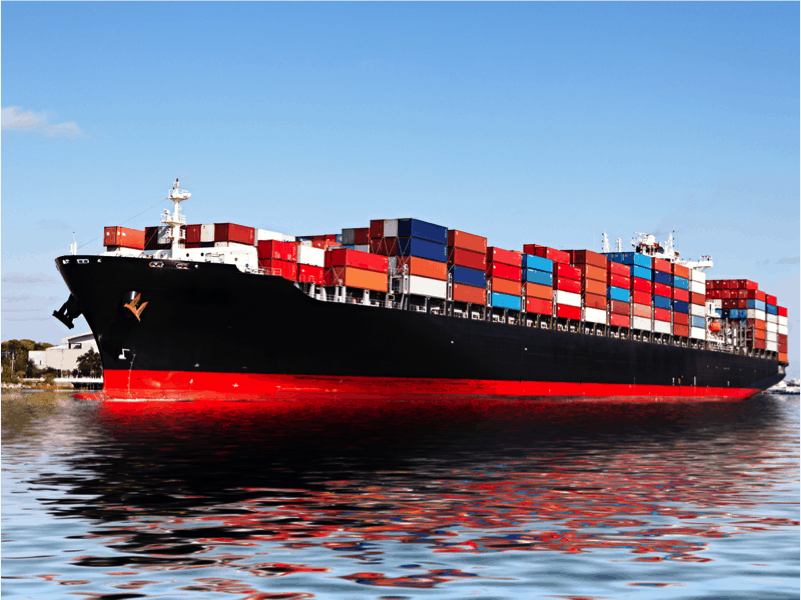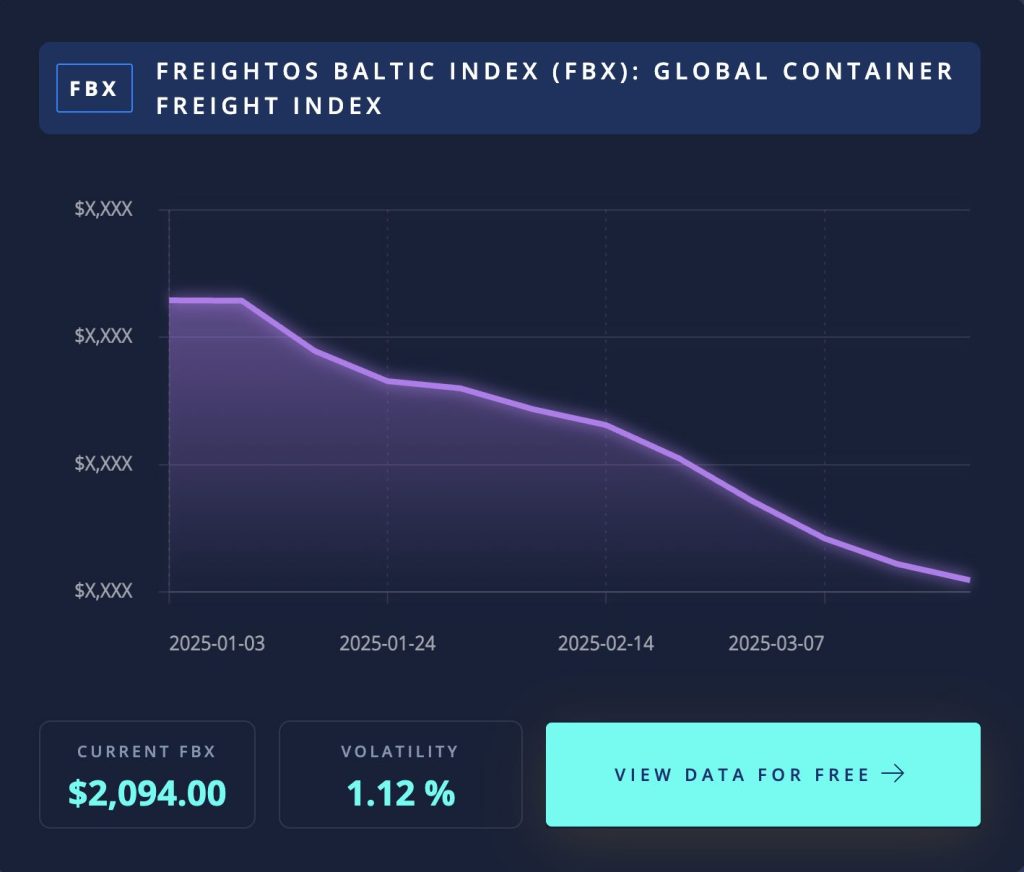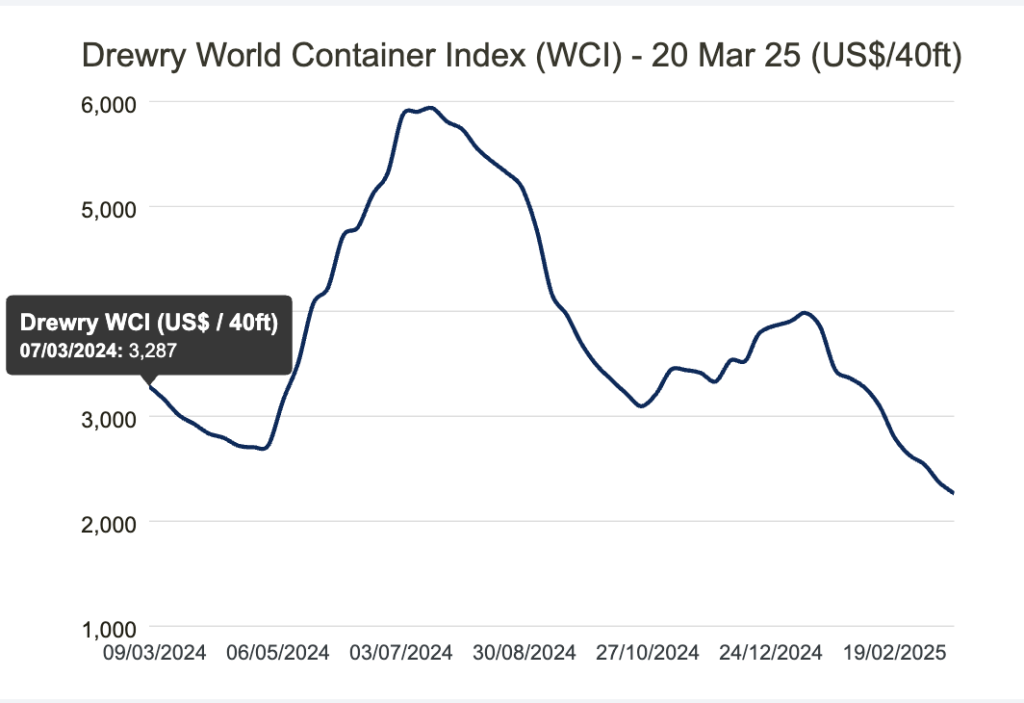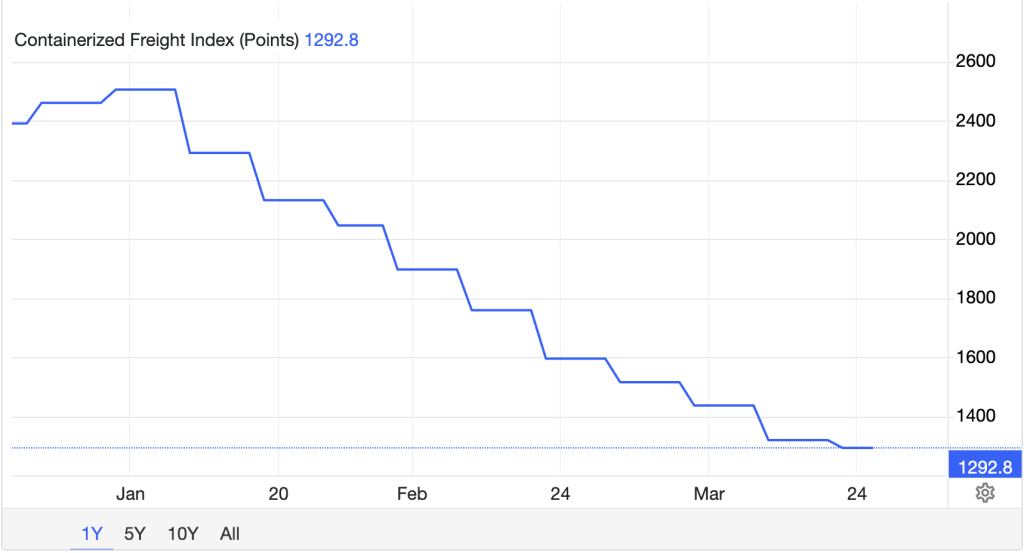Low Freight Rates & Breaks on Tariffs
How about a positive-looking headline for shippers? We could all use a little positivity sometimes, and international shipping news this week is highlighted by a couple positive stories for U.S. shippers.
Freight rates are down and President Trump says that many countries could get breaks on the reciprocal tariff hikes his administration is putting in place on April 2nd. Let’s get into the stories…
Freight Rates Lower Than Any Point in 2024
Many shippers are understandably spooked from importing and exporting goods right now because of the uncertainty around tariffs. However, for those who are shipping, they’re finding themselves good freight rate pricing.

In fact, shippers are getting lower freight rates for shipping from Asia than they saw at any point last year. That goes for Asia to Europe markets as well as transpacific shipping to the U.S., which is more the focus of Universal Cargo’s blog, as we’re a U.S. freight forwarder.
Stuart Chirls reports in a FreightWaves article:
Recent data from analyst Freightos indicates a consistent decline in rates for containers originating from Asia, reaching values below the lowest points of 2024.
…
The trans-Pacific rates have also followed a downward trajectory, with prices on westbound routes to the United States standing at approximately $2,400 per FEU. Eastern routes are slightly higher at $3,500, yet both reflect a notable decrease, 18% below the 2024 figures. Contributing to this decline are alliance reshuffles and a capacity-driven oversupply initially noted in 2023, despite temporary absorption due to Red Sea diversions.
Chirls brings up carrier attempts at implementing April GRIs (general rate increases), but they’re struggling to make those stick. April is a particularly rough moment as on the second, President Trump’s reciprocal tariffs are set to hit, but there’s been what most shippers would consider a positive update on that, which we’ll get into below.
But first, for our visual learners, let’s take a quick look at what the freight indexes look like right now regarding ocean freight rates.
Different indexes measure freight rates differently, but typically the trends of the rates are similar from one index to another. For shippers who love to see freight rates fall, the charts for current freight rates are going to look beautiful.
Freightos’ Global Container Index from the beginning of the year till now shows falling, falling, and more falling. I wouldn’t expect that trend to change right away after reciprocal tariffs hit next month.

Drewry’s World Container Index for the year to date shows how, after the first quarter last year, freight rates rose from their lowest point to their highest. What went up came tumbling down. Despite a surge around the end of 2024/beginning of ’25, freight rates are now consistently dropping all the way to below last year’s lowest point.

Two freight rate indexes are pretty good. But three is an even nicer number, so let’s add one more. Trading Economics’ Containerized Freight Index shows such a steady decline in freight rates week to week this year that it basically looks like a downward staircase.

By the way, Freightos, Drewry, and Trading Economics are all good resources for shippers.
President Trump Could Give “a Lot of Countries” Tariff Breaks
Here’s the tariff news many shippers will find positive. President Trump said he could be giving tariff breaks to “a lot of countries,” as reported by Andrew Moran in the Epoch Times:
Speaking to reporters at a news conference announcing a $21 billion investment from South Korea-based automaker Hyundai, Trump stated that the planned April 2 tariffs are “going to be everything.”
“I may give a lot of countries breaks,” Trump told a reporter when asked if the levies would be sector-specific as well as reciprocal.
He said the tariffs could be less than what other trading partners charge “because they’ve charged us so much.”
“I don’t think they could take it,” the president said. “In other words, they’ve charged us so much that I’m embarrassed to charge them what they’ve charged.”
April 2nd will be a big day of announcements when it comes to reciprocal tariffs, how much other countries will be charged with, what countries might get holds for negotiations, and what countries will be granted breaks on the full reciprocal amount that would bring U.S. tariff and duties on their goods up to their tariffs and duties on U.S. goods.
The stock market surged after President Trump’s remarks, including the word “flexibility,” when discussing the reciprocal tariffs. That’s no surprise, as the stock markets are incredibly reactive.
President Trump calls April 2nd “Liberation Day” for America. It will definitely be a big news day. If many countries get breaks, there could be fewer retaliatory tariffs than many feared, helping to limit the amount of escalation into trade war the U.S. has with other countries around the world.
However, there is one new tariff hike President Trump announcement this week that is worth mentioning. Yesterday, President Trump said he’d impose a 25% tariff on any countries that imports oil and gas from Venezuela. That 25% tariff would be on any trade countries that buy gas and oil from Venezuela do with the U.S., according to President Trump.





